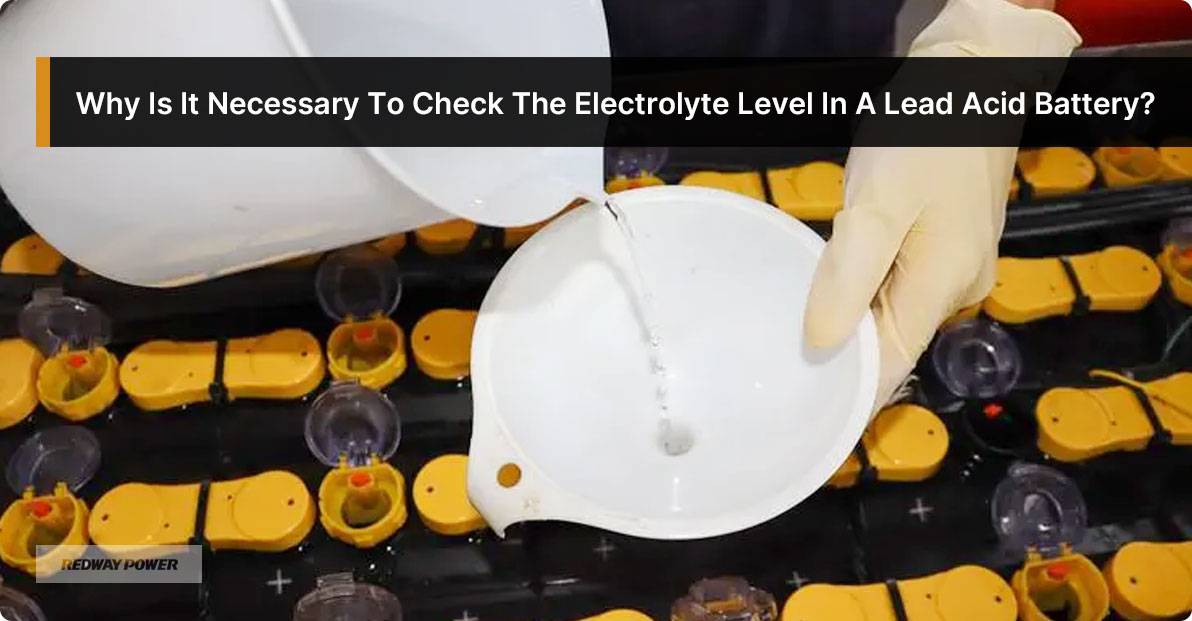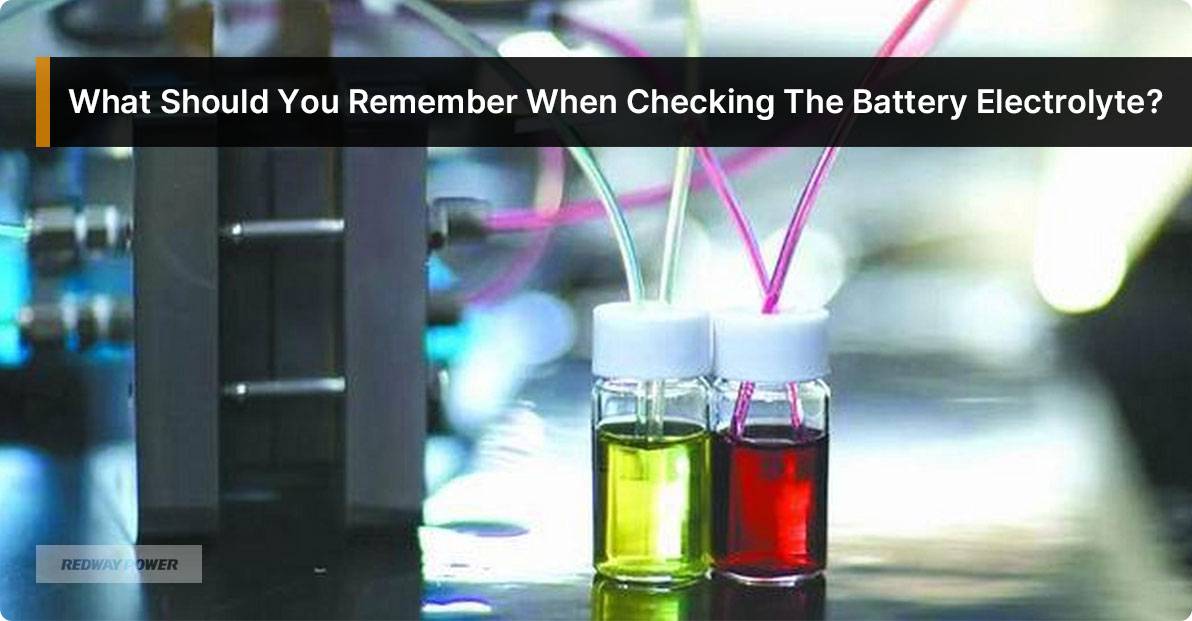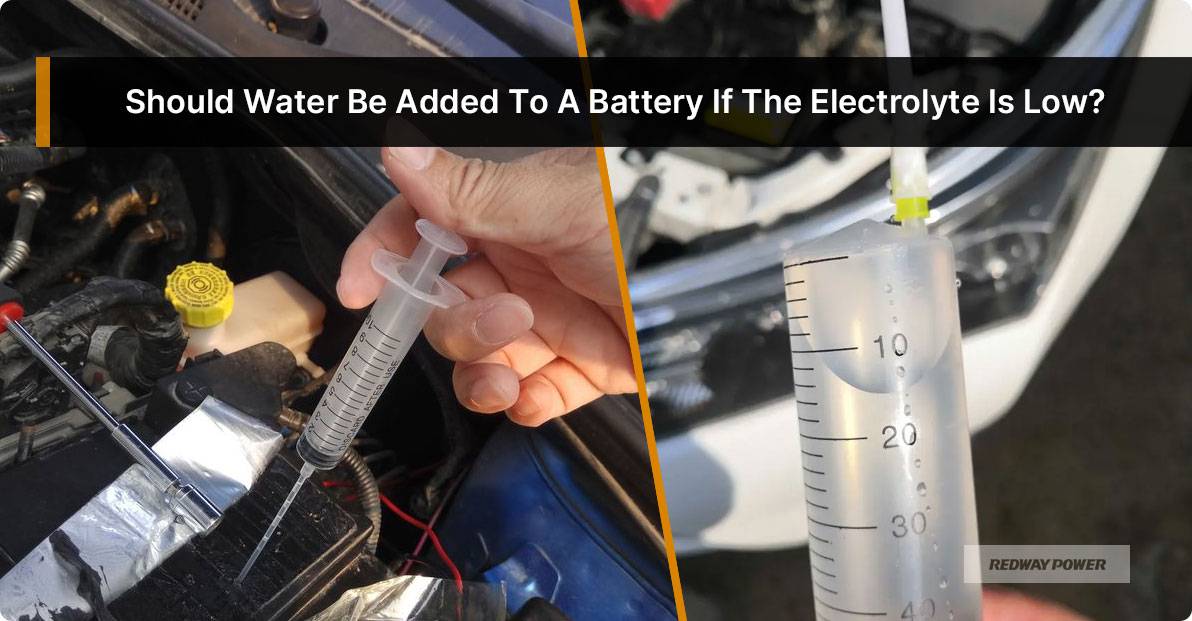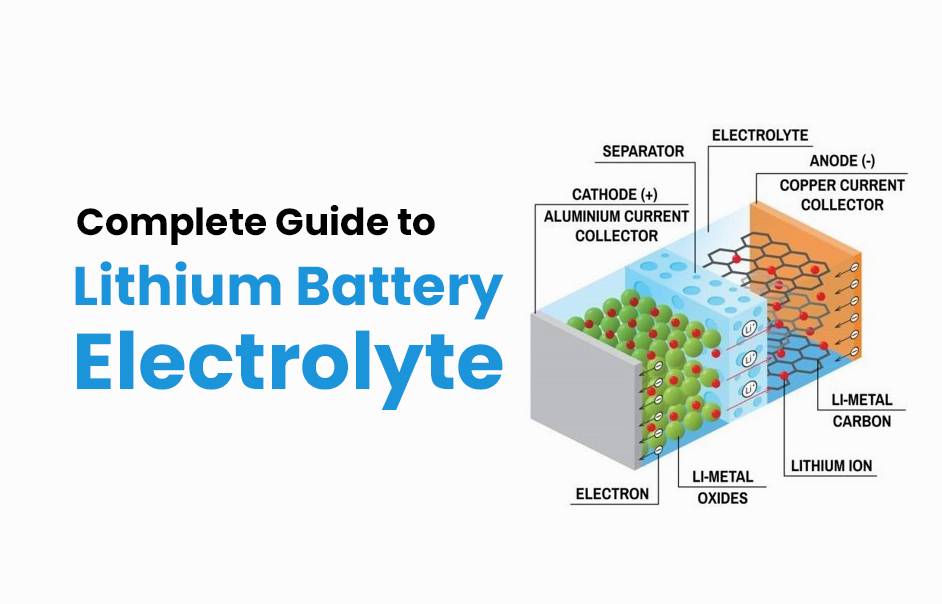- Forklift Lithium Battery
-
48V
- 48V 210Ah
- 48V 300Ah
- 48V 420Ah (949 x 349 x 569 mm)
- 48V 420Ah (950 x 421 x 450 mm)
- 48V 456Ah
- 48V 460Ah (830 x 630 x 590 mm)
- 48V 460Ah (950 x 421 x 450 mm)
- 48V 460Ah (800 x 630 x 600 mm)
- 48V 460Ah (820 x 660 x 470 mm)
- 48V 500Ah
- 48V 560Ah (810 x 630 x 600 mm)
- 48V 560Ah (950 x 592 x 450 mm)
- 48V 600Ah
- 48V 630Ah
-
48V
- Lithium Golf Cart Battery
- 12V Lithium Battery
12V 150Ah Lithium RV Battery
Bluetooth App | BCI Group 31
LiFePO4 Lithium
Discharge Temperature -20°C ~ 65°C
Fast Charger 14.6V 50A
Solar MPPT Charging - 24V Lithium Battery
- 36V Lithium Battery
- 48V Lithium Battery
-
48V LiFePO4 Battery
- 48V 50Ah
- 48V 50Ah (for Golf Carts)
- 48V 60Ah (8D)
- 48V 100Ah (8D)
- 48V 100Ah
- 48V 100Ah (Discharge 100A for Golf Carts)
- 48V 100Ah (Discharge 150A for Golf Carts)
- 48V 100Ah (Discharge 200A for Golf Carts)
- 48V 150Ah (for Golf Carts)
- 48V 160Ah (Discharge 100A for Golf Carts)
- 48V 160Ah (Discharge 160A for Golf Carts)
-
48V LiFePO4 Battery
- 60V Lithium Battery
-
60V LiFePO4 Battery
- 60V 20Ah
- 60V 30Ah
- 60V 50Ah
- 60V 50Ah (Small Size / Side Terminal)
- 60V 100Ah (for Electric Motocycle, Electric Scooter, LSV, AGV)
- 60V 100Ah (for Forklift, AGV, Electric Scooter, Sweeper)
- 60V 150Ah (E-Motocycle / E-Scooter / E-Tricycle / Tour LSV)
- 60V 200Ah (for Forklift, AGV, Electric Scooter, Sweeper)
-
60V LiFePO4 Battery
- 72V~96V Lithium Battery
- Rack-mounted Lithium Battery
- E-Bike Battery
- All-in-One Home-ESS
- Wall-mount Battery ESS
-
Home-ESS Lithium Battery PowerWall
- 24V 100Ah 2.4kWh PW24100-S PowerWall
- 48V 50Ah 2.4kWh PW4850-S PowerWall
- 48V 50Ah 2.56kWh PW5150-S PowerWall
- 48V 100Ah 5.12kWh PW51100-F PowerWall (IP65)
- 48V 100Ah 5.12kWh PW51100-S PowerWall
- 48V 100Ah 5.12kWh PW51100-H PowerWall
- 48V 200Ah 10kWh PW51200-H PowerWall
- 48V 300Ah 15kWh PW51300-H PowerWall
PowerWall 51.2V 100Ah LiFePO4 Lithium Battery
Highly popular in Asia and Eastern Europe.
CE Certification | Home-ESS -
Home-ESS Lithium Battery PowerWall
- Portable Power Stations
Why Is Electrolyte Management Crucial for Battery Performance?
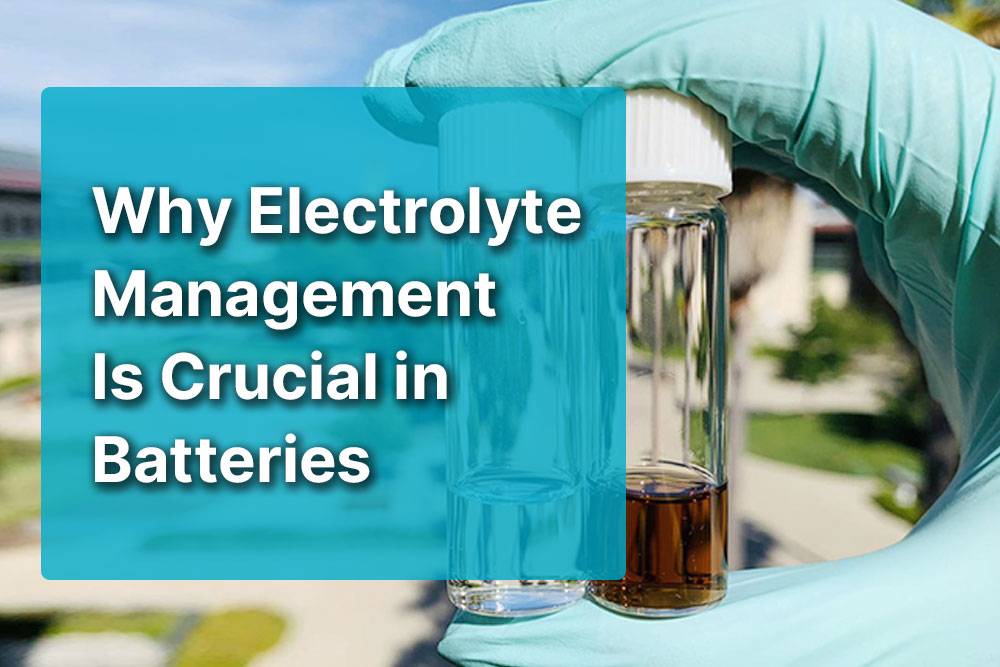
Effective electrolyte management is essential for maintaining optimal battery performance and longevity. Electrolytes facilitate ion movement within batteries, significantly impacting their efficiency and lifespan. Regular monitoring and maintenance of electrolytes can prevent issues such as reduced capacity, overheating, and premature failure.
What is the role of electrolytes in batteries?
Electrolytes are critical components in batteries, serving several key functions:
- Ion Conduction: They allow charged ions to move between the anode and cathode, enabling the flow of electrical current.
- Chemical Reactions: Electrolytes participate in chemical reactions that generate electricity.
- Temperature Regulation: They help manage heat during charge and discharge cycles.
Chart: Functions of Electrolytes in Batteries
| Function | Description |
|---|---|
| Ion Conduction | Facilitates movement of ions between electrodes |
| Chemical Reactions | Participates in energy generation |
| Temperature Regulation | Helps manage heat during operation |
How does electrolyte composition affect battery performance?
The composition of electrolytes directly influences a battery’s efficiency:
- Conductivity: Higher ionic conductivity results in better performance.
- Stability: Stable electrolytes reduce the risk of decomposition under high temperatures.
- Compatibility: The right electrolyte must be compatible with both electrodes to ensure efficient ion transfer.
Why is regular electrolyte maintenance important?
Regular maintenance is crucial for several reasons:
- Prevents Degradation: Monitoring levels helps prevent sulfation or crystallization, which can impair performance.
- Enhances Safety: Proper management reduces risks associated with leaks or thermal runaway.
- Extends Lifespan: Maintaining optimal conditions can significantly prolong battery life.
What are the consequences of poor electrolyte management?
Neglecting electrolyte management can lead to serious issues:
- Reduced Capacity: Low electrolyte levels can lead to diminished charge capacity and runtime.
- Overheating: Insufficient electrolyte can cause excessive heat buildup, risking damage or failure.
- Battery Failure: Long-term neglect may result in irreversible damage, necessitating costly replacements.
What types of electrolytes are used in batteries?
Various types of electrolytes are used across different battery chemistries:
- Aqueous Electrolytes: Common in lead-acid batteries; consist primarily of water and acids.
- Organic Solvents: Used in lithium-ion batteries; typically contain lithium salts dissolved in organic solvents.
- Solid-State Electrolytes: Emerging technology that offers improved safety and efficiency without liquid components.
How do temperature and impurities affect electrolyte performance?
Temperature and impurities significantly impact how well electrolytes function:
- Temperature Effects: High temperatures can increase reaction rates but may also lead to instability; low temperatures reduce conductivity and efficiency.
- Impurities Impact: Contaminants can hinder ion movement, leading to reduced performance and potential damage over time.
How can you restore battery performance through electrolyte management?
Restoring a battery’s performance often involves:
- Electrolyte Replacement: For flooded lead-acid batteries, replacing old or contaminated electrolyte with fresh solution can rejuvenate capacity.
- Desulfation Techniques: Using specialized chargers or additives to break down sulfate crystals on lead plates can restore function.
- Regular Monitoring: Keeping track of levels and specific gravity helps maintain optimal conditions for operation.
Industrial News
Recent advancements in battery technology emphasize the importance of effective electrolyte management systems. Innovations such as smart monitoring devices that track electrolyte levels and conditions are becoming more prevalent, allowing users to optimize battery health proactively. Additionally, research into solid-state electrolytes continues to advance, promising safer and more efficient energy storage solutions.
Redway Power Insights
“Proper management of electrolytes is critical for maximizing battery performance,” states an expert from Redway Power. “By understanding how to maintain these essential components, users can significantly enhance both safety and longevity.”
FAQ Section
What role do electrolytes play in batteries?
Electrolytes facilitate ion movement between electrodes, participate in chemical reactions, and help manage temperature during operation.How often should I check my battery’s electrolyte levels?
It’s recommended to check levels monthly, especially for flooded lead-acid batteries.What happens if my battery’s electrolyte levels are too low?
Low levels can lead to reduced capacity, overheating, and potential damage or failure.
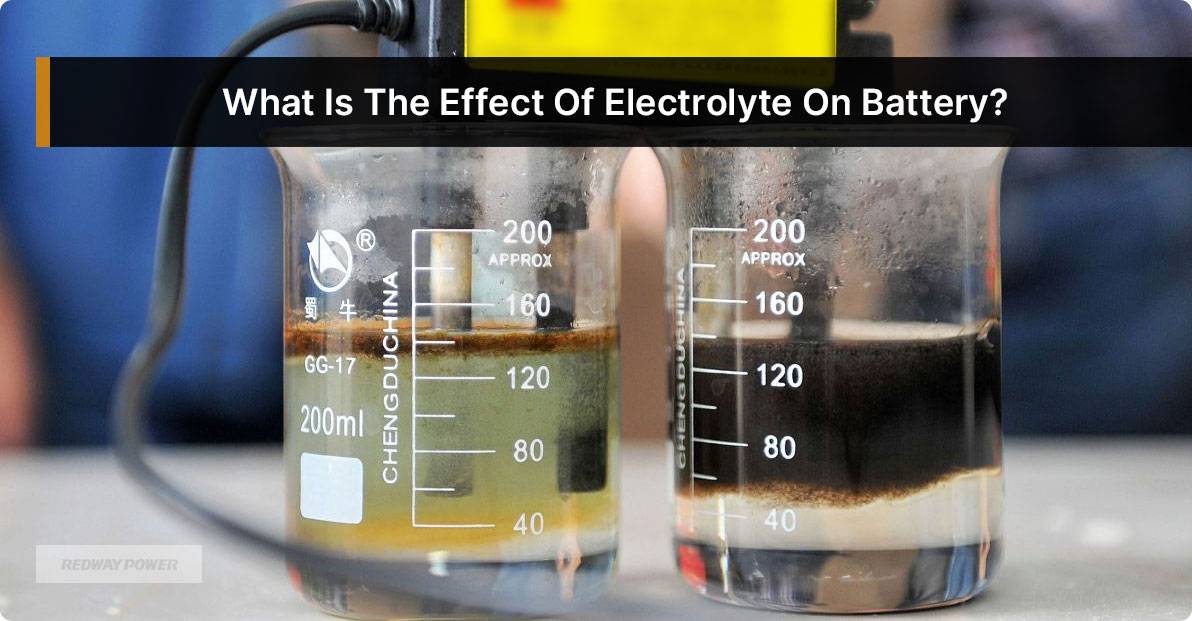
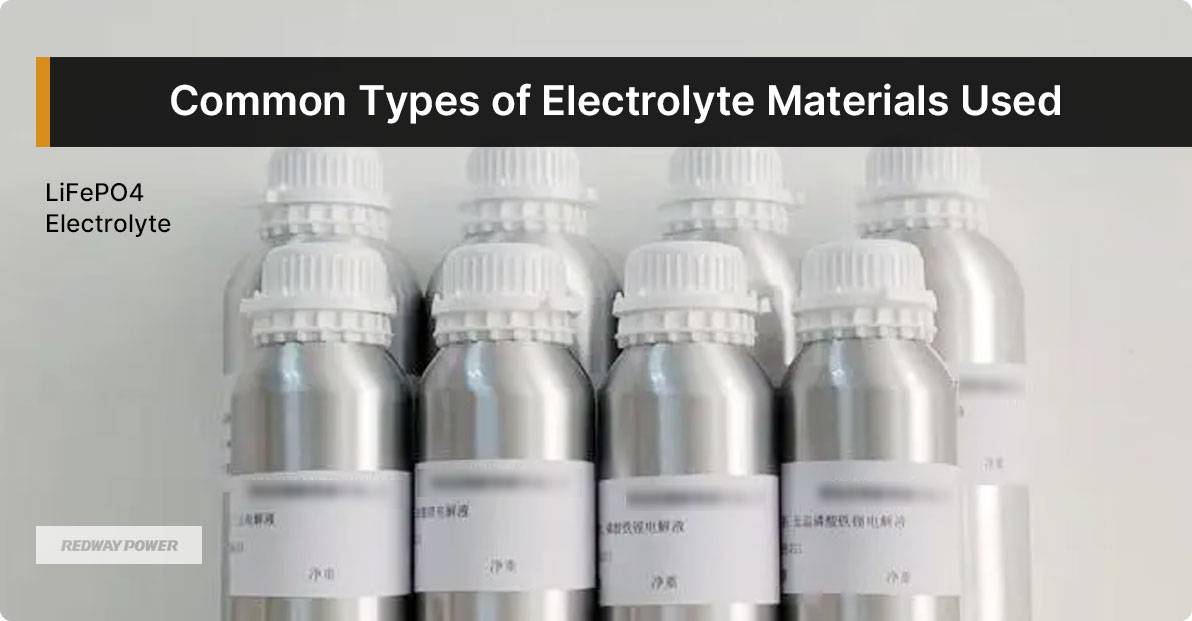
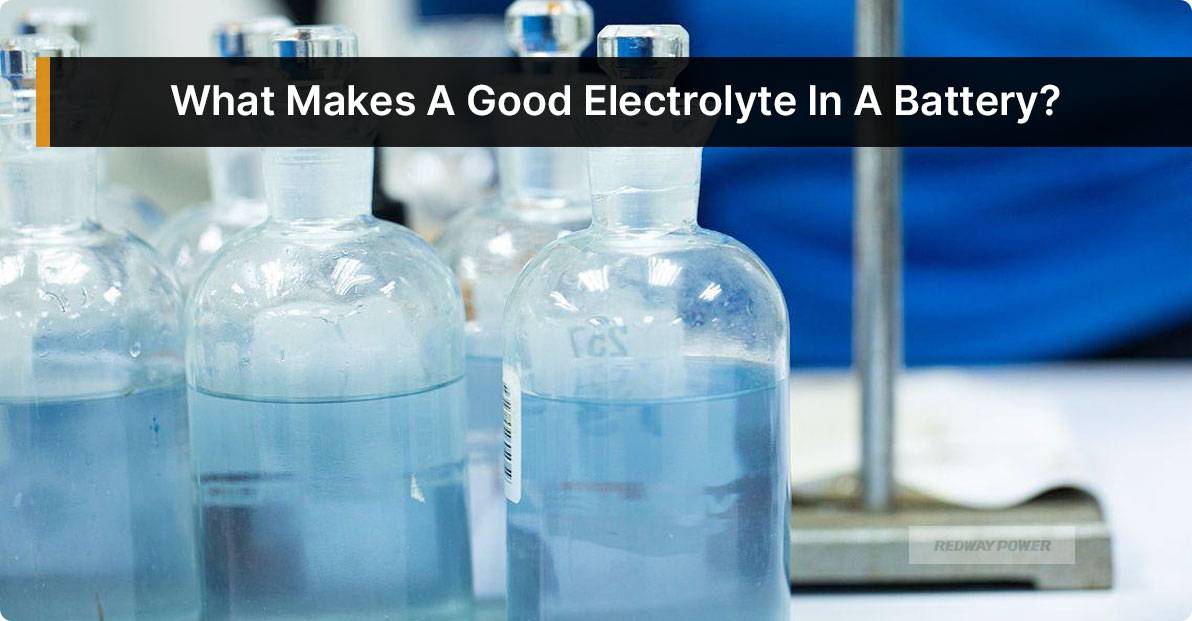
When Should I Replace My Battery Electrolyte?
If you’re wondering when to replace your battery electrolyte, keep an eye on its level and color. Look for significant decreases or color changes, indicating possible issues. Factors like overcharging and age affect electrolyte performance, so monitor regularly. Follow manufacturer guidelines for maintenance, topping up electrolytes as needed. Proactive replacement ensures a longer battery life and prevents damage.
How to Monitor and Maintain Electrolyte Levels in Batteries
To keep your battery in top shape, regularly check its fluid levels. Make sure the fluid covers the plates properly to avoid damage. Use distilled water to balance the pH if needed, but don’t overfill. Stay safe by wearing protective gear and handle batteries with care. Regular checks help catch problems early, extending your battery’s life.
Keeping an eye on your battery’s fluid levels is like giving it a health check. Let’s break down how to do it.
- Check the Fluid Level: Regularly inspect your battery’s cells to see if the fluid covers the plates adequately. If it’s too low, it might need a top-up.
- Maintain pH Balance: If the fluid level is low, add distilled water to keep the pH balanced. This helps prevent issues like sulfation, which can damage the battery.
- Handle with Care: When adding water, be careful not to overfill, as it can cause overflow during charging. Always wear protective gear and handle batteries gently to avoid accidents.
By following these steps, you’ll keep your battery in good shape and extend its lifespan, saving you from unexpected replacements.
What Should You Remember When Checking The Battery Electrolyte?
When checking battery electrolyte, remember safety first! Wear gloves and goggles and check in a ventilated area. Ensure the electrolyte is clear and at the recommended level. Use a flashlight to inspect, noting any corrosion. Follow manufacturer guidelines when adding electrolyte. Any unusual odors or colors may signal a need for replacement or professional help. Regular checks maintain battery health.
When checking battery electrolyte, safety is crucial. Here’s how:
- Safety Gear: Always wear gloves and goggles to protect yourself from chemical exposure.
- Ventilation: Inspect the battery in a well-ventilated area to avoid inhaling harmful fumes.
- Observation: Check the electrolyte’s color and level; it should be clear and at the recommended level.
- Inspection: Use a flashlight to inspect inside each cell for corrosion or debris.
- Follow Guidelines: Follow manufacturer guidelines when adding electrolyte to avoid overfilling or underfilling.
- Abnormalities: If you notice any unusual odors or colors, consider replacing the battery or seeking professional help. Regular checks ensure optimal battery health.
How Do You Calculate Battery Electrolytes?
Understanding how to calculate battery electrolytes is important for battery maintenance. You can use a hydrometer to measure the specific gravity of the electrolyte solution, indicating its charge state. This helps in determining if the battery needs charging or replacement. Accurate calculations prevent damage and ensure optimal battery performance. Regular monitoring is crucial for early issue detection and proper maintenance.
Here’s how you can do it:
- Use a Hydrometer: This tool measures the specific gravity of the electrolyte solution, showing its charge state. It tells you if the battery needs charging or replacement based on the concentration of sulfuric acid.
- Accurate Calculations: Ensuring precise calculations prevents damage to the battery. Overcharging or undercharging can harm the battery’s performance.
- Regular Monitoring: Keep an eye on your battery’s electrolyte levels and specific gravity readings. Regular checks help identify any issues early on, allowing for timely maintenance.
By following these steps, you can maintain your batteries effectively and extend their lifespan.
What Is The Cause Of Loss Of Electrolyte In A Battery Cell?
Why do batteries lose electrolytes? Batteries can lose electrolytes due to factors like high temperatures causing evaporation, overcharging, physical damage, or internal shorts. Regular inspection and maintenance are crucial to prevent premature battery failure. Look out for signs of leakage or damage, ensuring optimal battery performance and longevity.
Here’s why batteries lose electrolytes:
- Temperature Effects: High temperatures can cause electrolyte evaporation, leading to a decrease in the electrolyte level within the battery. This evaporation occurs more rapidly in warmer climates or during prolonged exposure to heat.
- Charging Issues: Overcharging or undercharging batteries can generate excess heat, which can degrade the electrolyte over time. This degradation may cause electrolyte loss through leaks or evaporation.
- Physical Damage: Damage to the battery casing or seals can result in electrolyte leakage. Cracks or breaks in the casing allow electrolytes to escape, leading to reduced battery performance.
By understanding these factors and taking proactive measures to address them, you can minimize electrolyte loss and prolong the lifespan of your batteries. Regular inspection and maintenance are essential for ensuring optimal battery performance.
Should Water Be Added To A Battery If The Electrolyte Is Low?
When your battery’s electrolyte is low, adding water may seem like a fix, but it can cause problems. Diluting the electrolyte affects battery performance. Following manufacturer’s guidelines is crucial. If levels remain low, consider replacing the battery. Avoid shortcuts and prioritize proper maintenance for long-lasting performance and safety.
When a battery’s electrolyte level is low, some may think adding water is a solution. However, it can harm the battery. Here’s why:
- Disruption of Balance: Adding water dilutes the electrolyte, disrupting its balance and hindering its ability to conduct electricity effectively.
- Reduced Lifespan or Damage: This disruption can lead to a reduced battery lifespan or even cause damage to the battery.
- Follow Manufacturer’s Guidelines: It’s crucial to adhere to the manufacturer’s maintenance guidelines and consider battery replacement if levels remain low. Proper maintenance ensures long-term performance and safety.
What Is The Role Of Electrolytes In A Lithium Ion Battery?
In lithium-ion batteries, electrolytes are crucial for moving ions between the battery’s positive and negative parts, generating electrical energy. They’re made of lithium salts dissolved in solvents, ensuring smooth ion flow. Maintenance is vital for stable performance; factors like temperature and impurities can affect electrolyte function. Regular checks help prolong battery life and efficiency.
Understanding the role of electrolytes in lithium-ion batteries is important for knowing how these batteries work and how to maintain them. Let’s break it down into simpler terms.
- Essential Ion Movement: Electrolytes in lithium-ion batteries help ions move between the positive and negative parts of the battery, allowing the battery to produce electricity.
- Smooth Energy Flow: These electrolytes contain lithium salts dissolved in solvents, ensuring that ions can move smoothly within the battery, enabling efficient energy production.
- Maintenance for Longevity: Regular maintenance is crucial for stable battery performance. Factors like temperature and impurities can affect how well the electrolytes work, so it’s important to check and maintain them regularly.
Understanding these concepts can help you take better care of your lithium-ion batteries, ensuring they last longer and perform optimally.
Why Is It Necessary To Check The Electrolyte Level In A Lead Acid Battery?
Checking the electrolyte level in a lead acid battery is vital for its health. Low levels can expose the plates, causing damage and concentration of sulfuric acid, leading to sulfation. Regular checks prevent issues, ensuring efficient battery function, longer lifespan, and reliable performance.
Checking the electrolyte level in a lead acid battery is vital for its health and performance. It ensures the battery functions properly and lasts longer, avoiding potential problems.
- Preventing Damage: Regularly checking the electrolyte level helps prevent damage to the battery. If the level is too low, the battery plates can get exposed, leading to damage and reduced efficiency.
- Maintaining Efficiency: By monitoring the electrolyte level, you can maintain the battery’s efficiency. Proper electrolyte levels ensure the battery operates optimally and delivers the required power.
- Ensuring Reliable Performance: Checking the electrolyte level ensures the battery performs reliably when needed. It helps identify any issues early on, allowing for timely maintenance and preventing unexpected failures.
By understanding the importance of checking electrolyte levels, users can effectively maintain their lead acid batteries and prolong their lifespan. Regular checks ensure the battery remains in good condition, providing reliable power when required.
